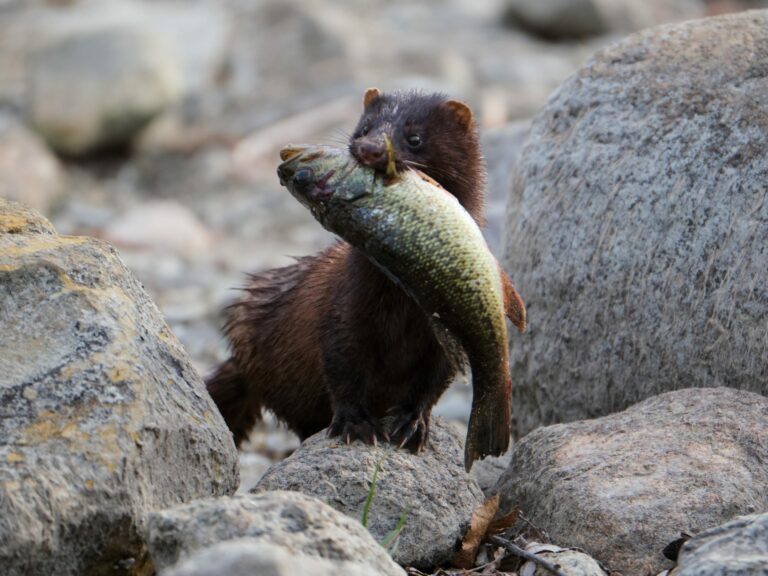langerhanscellhistiocytosis.org – Minks are semi-aquatic carnivores known for their sleek, dark fur and versatile hunting abilities. Found across North America and Europe, minks thrive in wetlands, rivers, and forests, where they make use of both land and water to find food. These small but fierce predators are well-equipped to hunt a variety of animals, making them adaptable and efficient hunters. Let’s dive into the diet of the mink and how they find sustenance in the wild.
Carnivorous Hunters
Minks are obligate carnivores, meaning their diet is primarily made up of meat. They are opportunistic predators that feed on a wide range of prey depending on their environment and what is available. Some of the most common foods in a mink’s diet include:
- Fish
- Frogs
- Crustaceans (such as crayfish)
- Rats
- Mice
- Voles
Minks are highly adept swimmers, allowing them to hunt aquatic prey like fish, frogs, and crayfish. Their semi-aquatic lifestyle gives them access to a broader range of food sources than many other land-based carnivores.
Opportunistic Feeders
While minks have a strong preference for aquatic animals, they are opportunistic hunters and will take advantage of a variety of land-based prey. In addition to fish and rodents, minks will hunt:
- Birds (and their eggs)
- Rabbits
- Insects
- Small mammals
Minks are known for their ability to adapt to different environments and food sources, which makes them versatile hunters. They are capable of hunting both day and night, depending on the availability of prey. Minks are also excellent climbers and can raid bird nests, making birds and their eggs an important part of their diet when other food sources are scarce.
Seasonal Changes in Diet
Like many wild animals, minks adjust their diet based on seasonal changes. During the warmer months, when rivers and wetlands are teeming with aquatic life, minks primarily feed on fish, frogs, and other water-based prey. In winter, when ice and snow reduce the availability of these food sources, minks turn to land-based prey like rodents, rabbits, and birds.
Minks are also known to store food when prey is abundant. They will stash extra catches in their dens or burrows, ensuring they have a food supply for harsher months when hunting becomes more challenging.
Impact on Ecosystems
As predators, minks play a crucial role in regulating populations of small mammals, fish, and aquatic species. By keeping rodent and fish populations in check, they help maintain balance in both aquatic and terrestrial ecosystems. In wetlands and along riverbanks, their hunting helps prevent overpopulation of species that could disrupt the local environment.
However, in some regions, minks are considered invasive species or pests. Non-native minks introduced into new environments, such as Europe, have impacted local wildlife, particularly bird populations, as minks are known to raid nests. Their impact on fish farms and poultry coops also causes concern in certain areas.
Conclusion
Minks are versatile carnivores that thrive on a diet rich in both aquatic and terrestrial prey. Their adaptability and skilled hunting make them formidable predators in their habitats, from rivers to forests. While they play an important role in controlling prey populations, minks can sometimes have a negative impact on local ecosystems, particularly where they are non-native. Nevertheless, their ability to navigate both land and water in search of food makes them a fascinating and essential part of the natural world.

